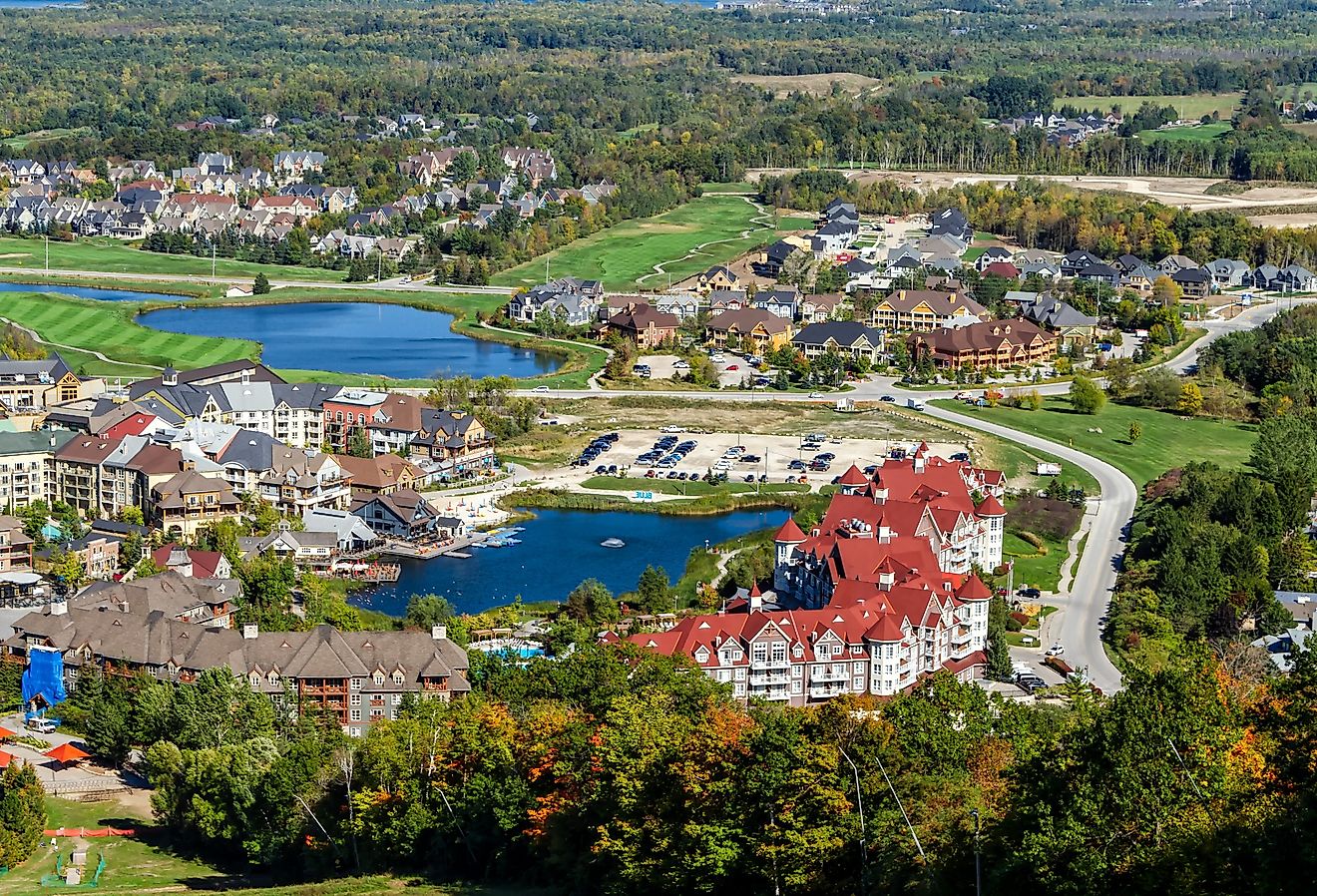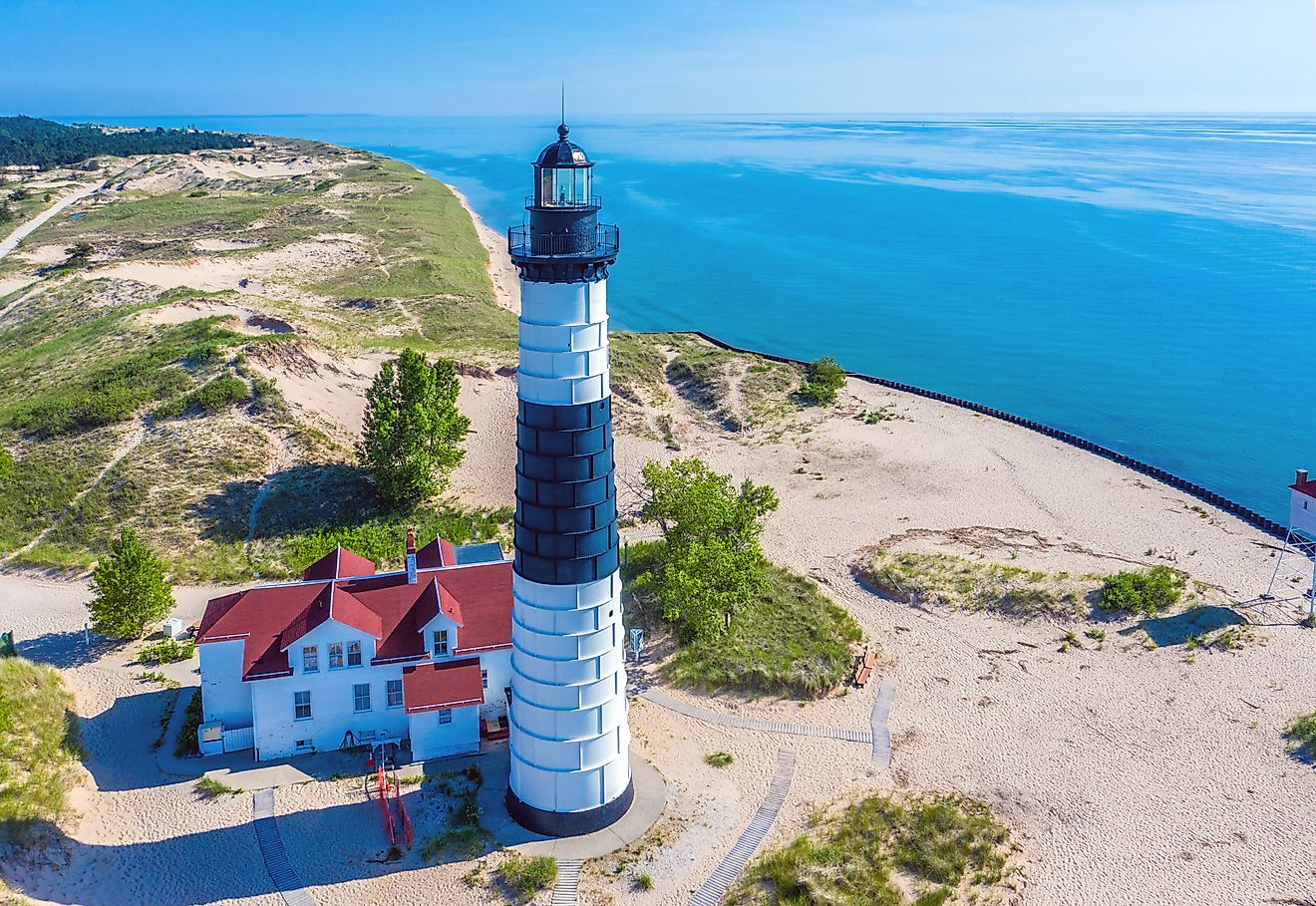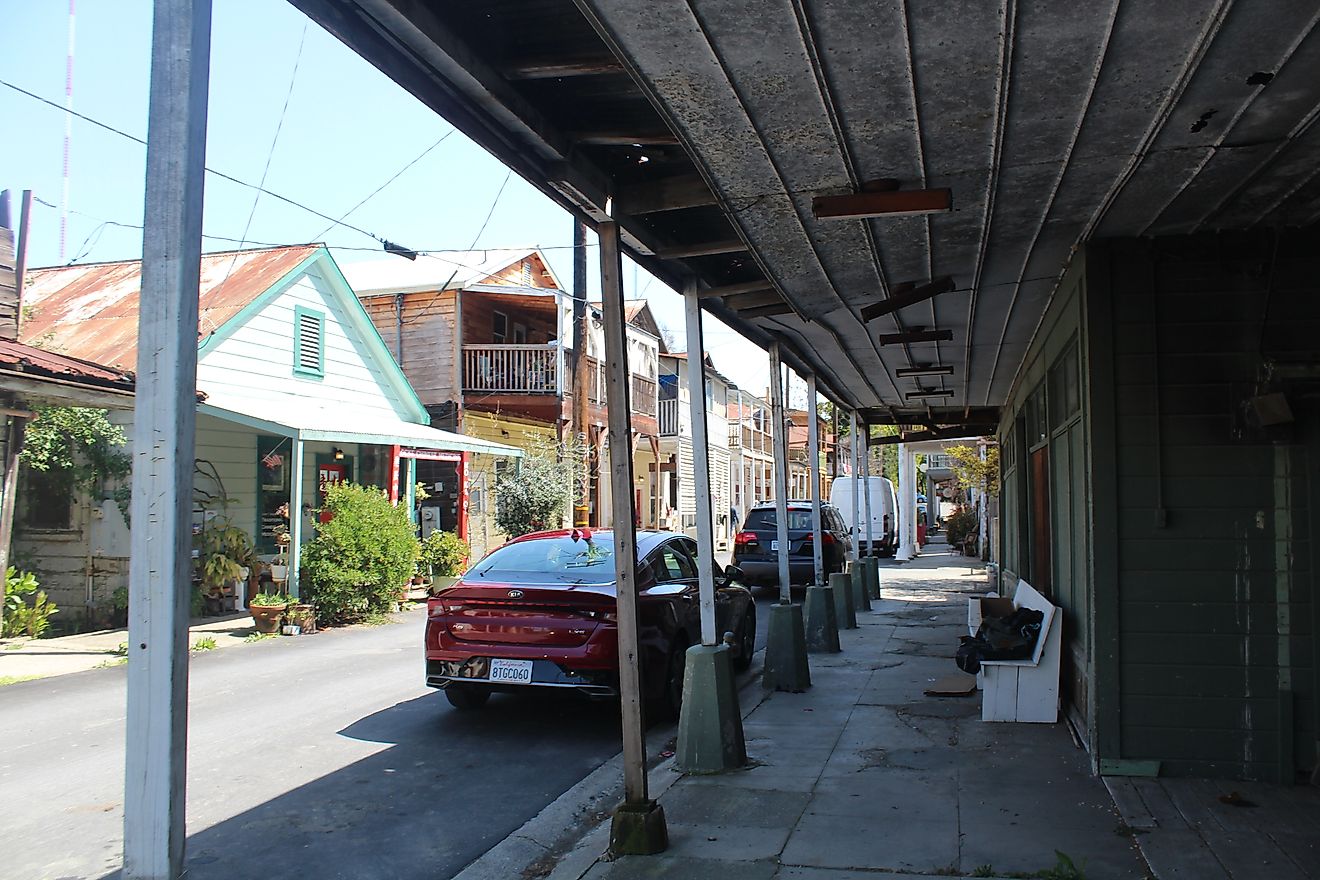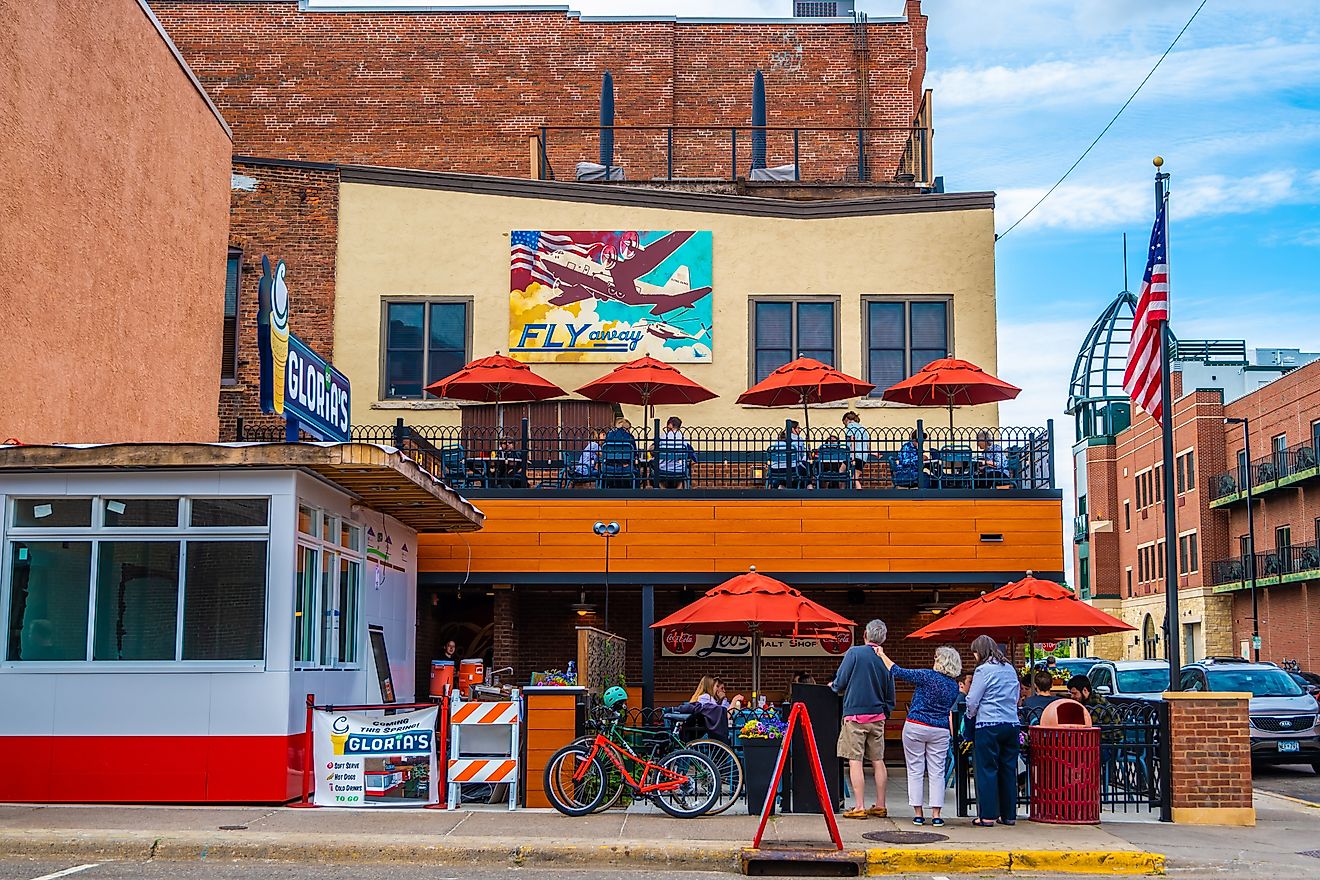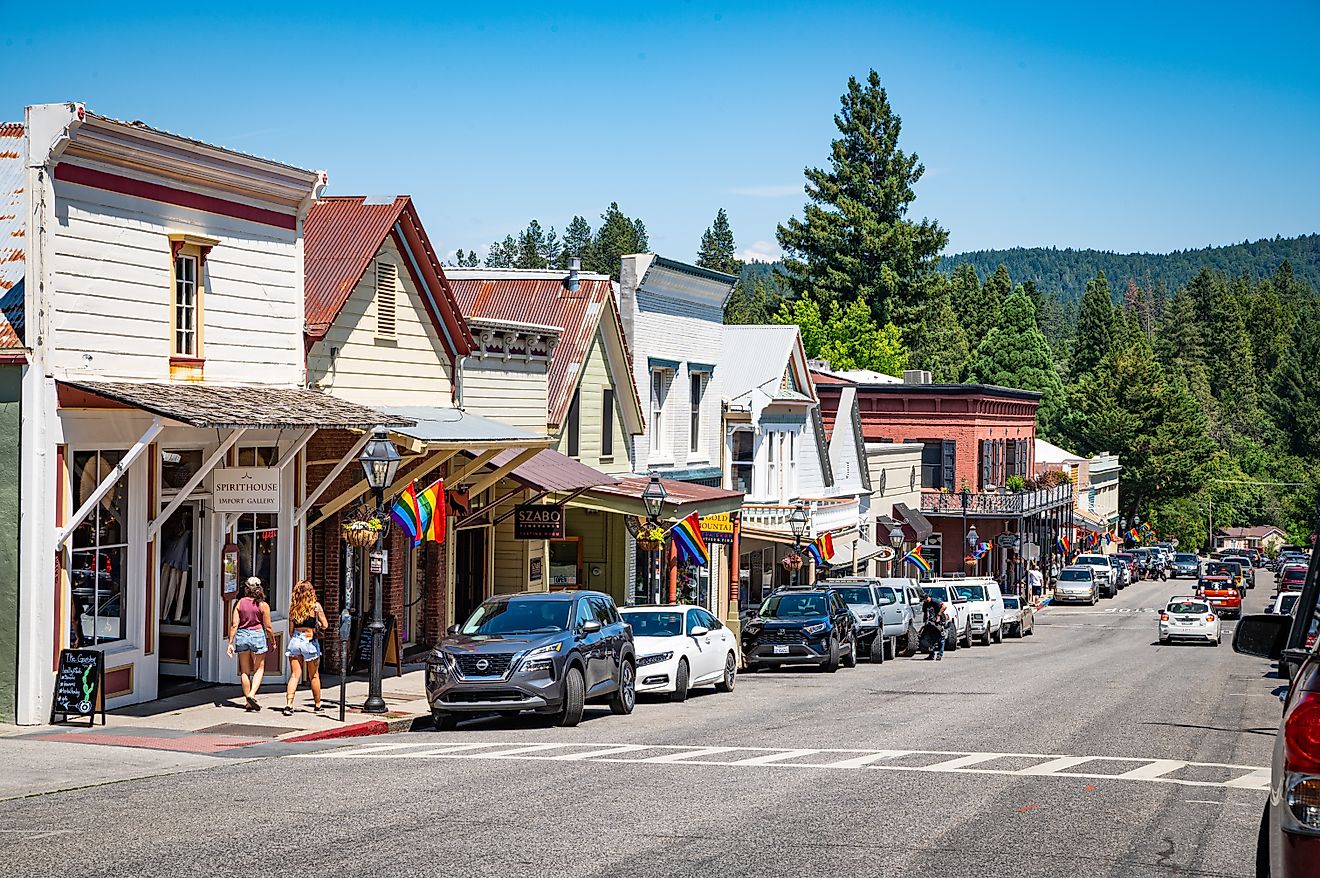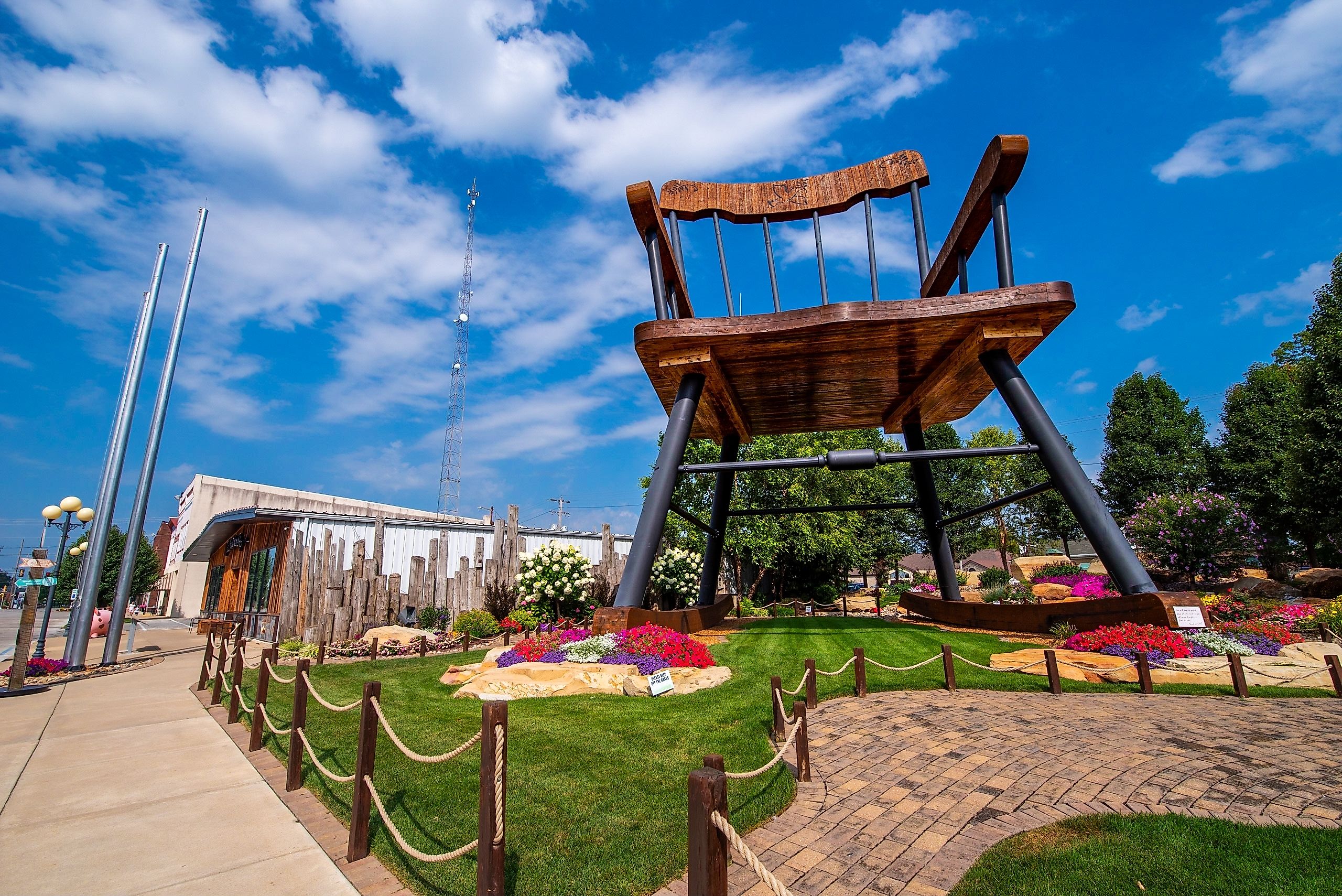
11 Offbeat Towns In The United States To Visit In 2025
From New York to Los Angeles, the United States is jam-packed with many renowned travel destinations. Whether you're headed to a national park or a bustling city, the options are seemingly endless here. And while you can stick to the well-traveled favorites, you also might be out for an experience that not all can say they've had before.
That’s why this list highlights some of the best offbeat towns from all across the country that are perfect for your next trip in 2025. Whether you're drawn to alien crash sites in Roswell or hoping to explore the remains of a nearly abandoned coal town like Centralia, these destinations offer quirky charm and unforgettable experiences far from the ordinary.
Toad Suck, Arkansas

Located along the Arkansas River near the city of Conway, Toad Suck is a small and deeply rural community best known for its unusual name. The title reportedly originated from steamboat crews who waited at the local tavern for river levels to rise; locals said they would “suck on the bottle 'til they swelled up like toads.” Today, that odd phrase lives on through one of the country's more peculiar town names.
One of there region's most recognizable event, Toad Suck Daze, draws thousands each spring to the neighboring Conway. It includes toad races, a carnival, local crafts, and regional food vendors. Proceeds from the festival help fund education scholarships for members of Faulkner County. The nearby Toad Suck Park, operated by the U.S. Army Corps of Engineers, is another worthwhile attraction that features several riverside spots for camping, boating, and picnicking. And if you're interested in history, you will also find various interpretive signage explaining the area's storied past, from the steamboat era to the days when this part of Arkansas was on the edge of the western frontier.
Whittier, Alaska
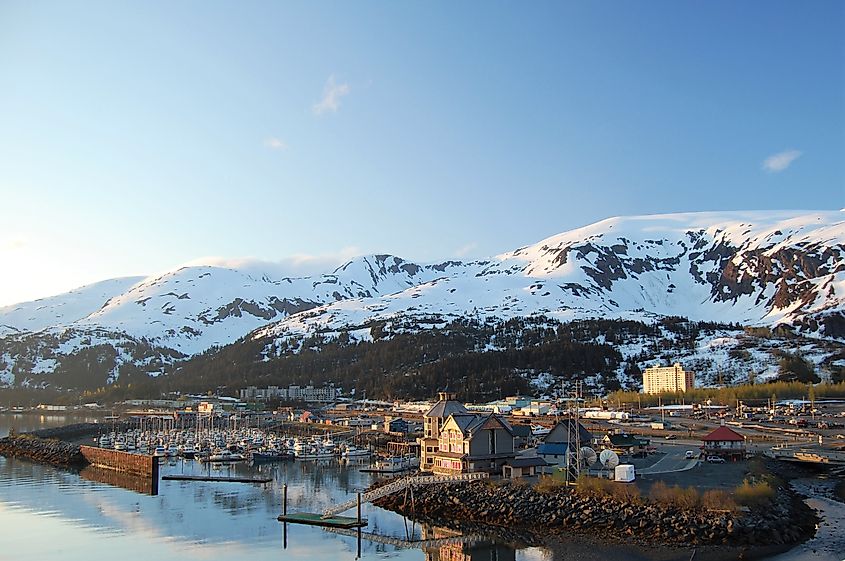
Accessible by a single 2.5-mile tunnel (the longest highway tunnel in the country), Whittier is one of the most isolated and unusual towns in the United States. Visitors must pass through the Anton Anderson Memorial Tunnel to reach the town, a rare single-lane tunnel that operates on a timed schedule for alternating directions.
Located on Prince William Sound and surrounded by the steep mountains and glaciers that exemplify Alaska, the town has fewer than 300 year-round residents, most of whom all live in the same building! Begich Towers, a Cold War-era structure originally built by the U.S. Army, serves as the primary residence, post office, police station, health clinic, and grocery store for most of the local population. This unique, yet convenient, consolidation gives Whittier a reputation as “the town under one roof.”
Despite its minuscule size, Whittier is a major port for cruise ships and fishing vessels passing by this coastal community. Its deep-water harbor provides access to glacier cruises, ocean kayaking excursions, and wildlife tours for you to embark on.
Centralia, Pennsylvania
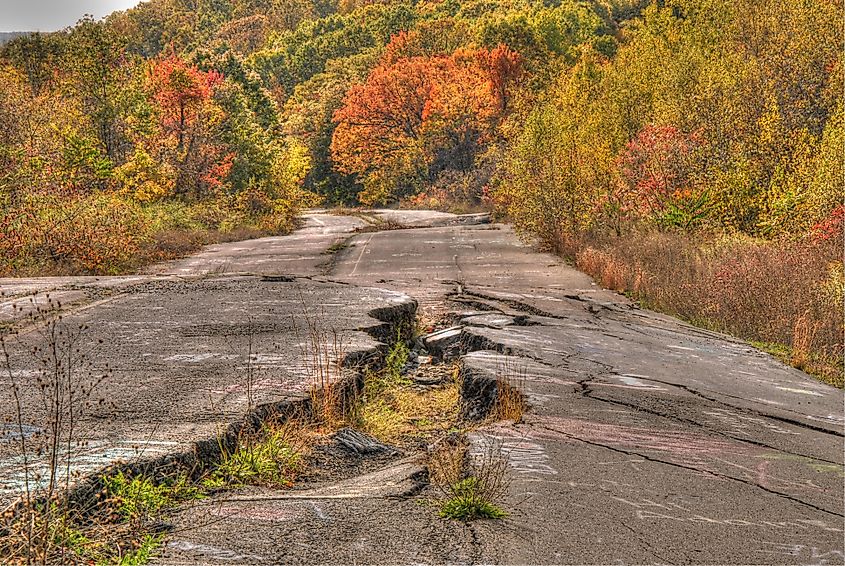
Offbeat might be a bit of an understatement here. Centralia is an almost-abandoned town in eastern Pennsylvania, known for the underground mine fire that has been burning beneath it since 1962. Once home to over 1,000 residents, the fire eventually forced a mass relocation away from the area. It is estimated that only five people remain today, with the state having seized most properties under eminent domain for clear safety reasons.
The fire began when a landfill near a mine opening was set ablaze, accidentally igniting an underground coal seam. Attempts to extinguish it failed, and the fire spread through abandoned mine tunnels beneath the town basically unobstructed. Dangerous sinkholes and toxic gases then made the area hazardous and unstable, leading to the slow closure of roads, schools, and homes over the following decades.
Today, Centralia draws urban explorers intrigued by its eerie, almost post-apocalyptic landscape. Graffiti Highway is one notable landmark here, an abandoned stretch of Route 61 that was once a popular destination for street artists to use as a canvas until the owners buried it with dirt in 2020 to discourage trespassing. Still, other remnants of the town remain, including more broken streets, a few stubborn homesteads, and even some visible steam vents emerging from the ground.
Slab City, California

Situated in the Sonoran Desert near the Salton Sea, Slab City occupies the remains of a former World War II Marine base. When the military left, only row upon row of concrete slabs remained. Over time, an eclectic melange of squatters, artists, and drifters claimed the site, turning it into an off-grid settlement often described as “the last free place in America.”
Slab City has no official municipal government, water supply, or electricity grid. Residents usually live in RVs, makeshift shelters, or tents, relying on solar panels, generators, and a barter system economy, a real libertarian's paradise. The population fluctuates seasonally, growing during the winter as nomads and snowbirds arrive when the summer heat of Southern California dies down.
One of the most well-known landmarks nearby is Salvation Mountain, a massive, brightly painted hillside sculpture created by resident Leonard Knight using, in large part, salvaged junk, adobe, hay, and thousands of gallons of paint. Covered in religious messages and colorful imagery, it has become a pilgrimage site for both spiritual seekers and photographers.
Just steps from "downtown" Slab City, East Jesus serves as another standout outdoor art space built entirely from found materials. Installations at this destination range from large-scale sculptures to experimental performance stages.
Casey, Illinois
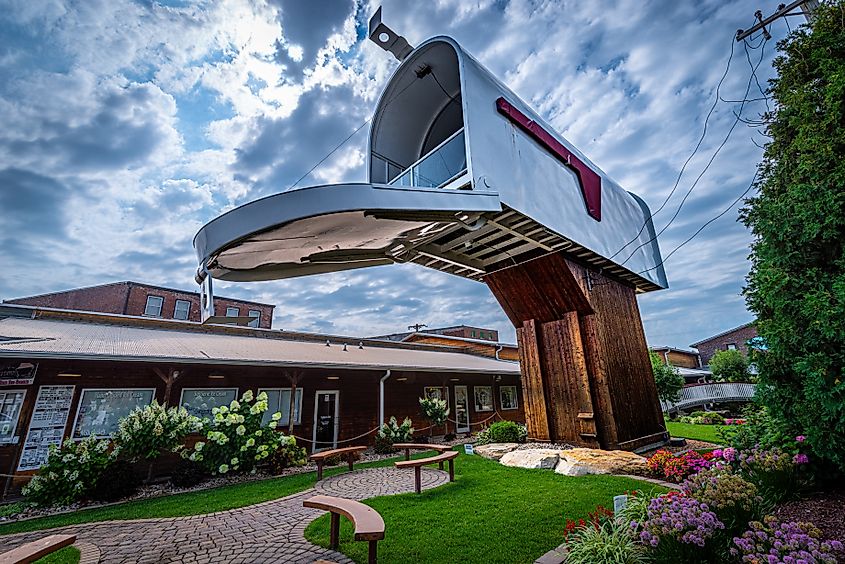
A small community in eastern Illinois with under 2,500 residents, Casey has become known for installing a collection of oversized everyday objects in various locations around town. The initiative began in the early 2010s when local business owner Jim Bolin sought to attract travelers by building record-breaking sculptures that are hard to miss. Twelve of these impressive landmarks remain today.
This collection of oversized items includes the world’s largest mailbox, rocking chair, pitchfork, and golf tee. Each item is fully functional, too. The mailbox accepts and delivers mail, and visitors can climb the rocking chair stairs for a view from the top. Many of the sculptures are scattered around the downtown area, encouraging you to go on an extended walking tour.
The “Big Things Small Town” project also includes many unofficial entries such as a giant pencil, birdcage, and yardstick. Metalwork for these items was completed by Bolin Enterprises, a local pipeline service company. If you are traveling between Indianapolis and St. Louis, be sure to spend some time in Casey. It is located almost exactly halfway between the two cities on Interstate 70.
Gibsonton, Florida

Gibsonton, which sits just south of Tampa, was once a major wintering hub for carnival workers and sideshow performers. Beginning in the mid-20th century, it became a seasonal home for individuals who worked in traveling circuses, including sword swallowers, fire-eaters, and those billed as “human oddities.” This distinct population became so prevalent that the town earned the nickname “Showtown, U.S.A.”
The International Independent Showmen’s Museum is now the most visible reminder of Gibsonton’s past. It features an extensive collection of artifacts, including banners, wagons, costumes, and equipment that once traveled the country with carnivals. Furthermore, the Showmen’s Association, headquartered in the town, continues to support members of the traveling entertainment industry.
Though its carnival-adjacent heyday has faded, Gibsonton remains one of the most unusual communities in the country due to its deep connection to sideshow culture in America and traveling performance history. What set Gibsonton apart in a more technical way was its zoning laws. At one point, it was one of the few places in the United States where residents could legally keep circus animals on their property. Elephants were not uncommon sights in local yards for quite some time!
Roswell, New Mexico

Roswell is renowned worldwide for its association with a 1947 incident in which an unidentified object, initially described by official sources as a “flying disc,” crashed on a nearby ranch. Though later attributed to a weather balloon from a classified military project (allegedly), the event sparked decades of speculation and positioned Roswell at the center of the UFO discussion.
Today, Roswell embraces this out-of-this-world reputation. The town is home to numerous attractions for all the E.T. enthusiasts out there, including the International UFO Museum and Research Center, which houses documents, photos, and first-hand accounts related to the 1947 crash and other sightings. The museum is an important destination along the “New Mexico Space Trail,” which includes sites around the area that you can see up close.
Each summer, the town hosts the UFO Festival, drawing thousands of visitors for exciting events like guest lectures, costume contests, and alien-themed parades. Roswell's downtown core has adopted the theme year-round as well, with streetlights that are shaped like alien heads, and local shops sell space-related gifts and memorabilia.
Hell, Michigan
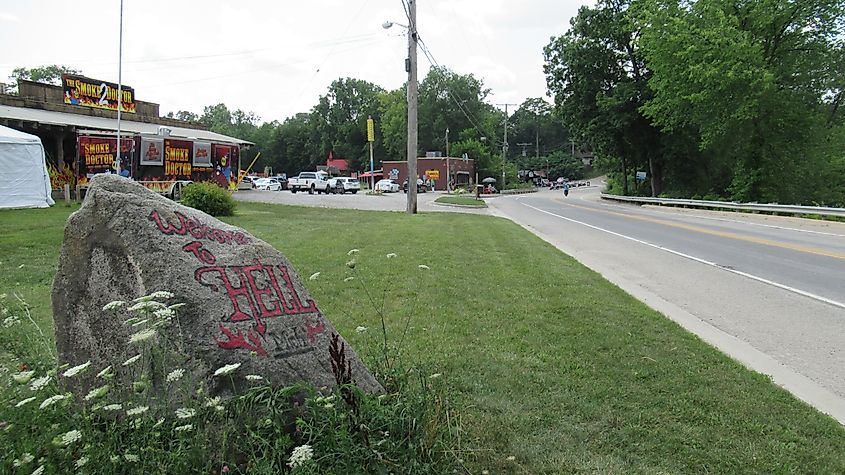
Located about 15 miles northwest of Ann Arbor, Hell is a community with a name that has become its primary attraction, but it has more to offer its visitors. The origin of the name is debated; some trace it to 19th-century German travelers calling the area "so schön hell" ("so beautifully bright"). In contrast, others cite a tavern owner who declared, “You can name it Hell for all I care,” when asked what the then somewhat irrelevant backcountry town should be called.
Hell has built an identity around the novelty of its name, offering you a venue to get married in the “Gates of Hell,” or shop to purchase souvenirs with slogans that play on the town’s branding. Even when the town literally froze over in an ice storm one winter (a common occurrence for many Michigan towns), it of course made national headlines. Other nearby attractions include Screams Ice Cream and the Hell Hole Diner, both serving up sinnfully delicious eats. The town also issues unofficial “Damnation University Diplomas,” aptly costing $66.66.
Hygiene, Colorado

Located in Boulder County, Hygiene is a rural hamlet with a name that stems from the Hygiene Home, a former tuberculosis sanitarium established in the area when Colorado was heavily promoted as a health destination due to its dry climate and high elevation. The institution closed after a little less than a decade and was finally torn down in 1926, but the name stuck.
Visitors can admire the historic Church of the Brethren, listed on the National Register of Historic Places, or stop by local favorites like The Mountain Fountain, a country store and gluten-free deli. Though small in scale, Hygiene’s offbeat name and medical history make it a curiosity for travelers seeking lesser-known stops outside of Colorado's incredibly popular Rocky Mountain locales.
Scottsboro, Alabama
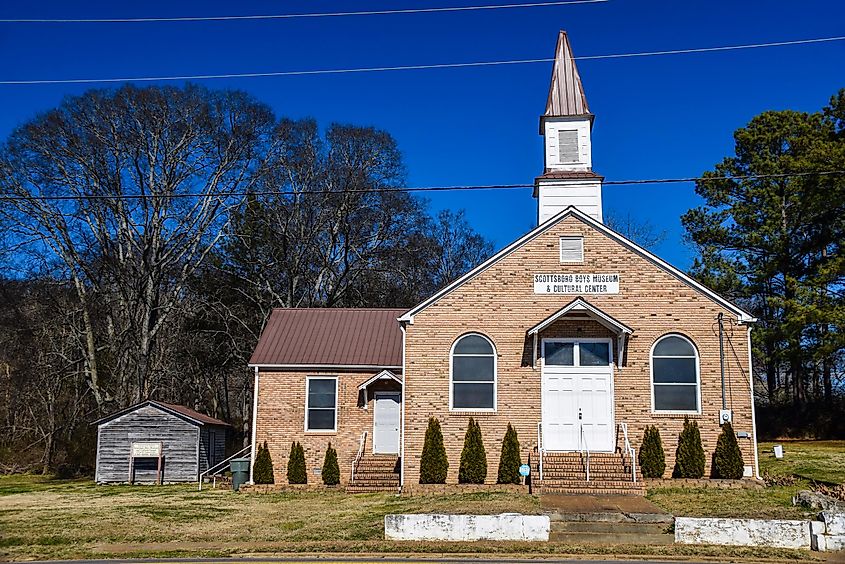
Scottsboro operates one of the country’s strangest shopping experiences at the Unclaimed Baggage Center. This facility receives lost or unclaimed airline luggage from across the United States, processes the contents, and resells the items in a retail store that spans an enormous 50,000 square feet.
Each suitcase is unpacked, sorted, cleaned, and appraised before items are priced and placed on shelves, ensuring a setting that goes above and beyond your average thrift store. It includes sections for almost anything, from clothing and electronics to musical instruments, jewelry, and rare finds, such as legitimate Egyptian artifacts, a camera from a space shuttle, and a 40-carat emerald! There is even a museum-like area inside the store that highlights the most unusual discoveries over the years. The Unclaimed Baggage Center has become the town’s primary tourist attraction and a major draw for savvy shoppers, attracting hundreds of thousands of visitors looking for a deal each year.
Beyond the baggage, Scottsboro has a traditional courthouse square and a regional history, including the infamous Scottsboro Boys trial, with a museum dedicated to the case. The Scottsboro-Jackson Heritage Center, also located downtown, is another great museum that explores the town's past within a pioneer village and various exhibits displaying local artifacts. Still, the ability to dig through strangers’ lost belongings, legally and in bulk, sets Scottsboro apart as a highly unique destination to visit this year.
Arcosanti, Arizona
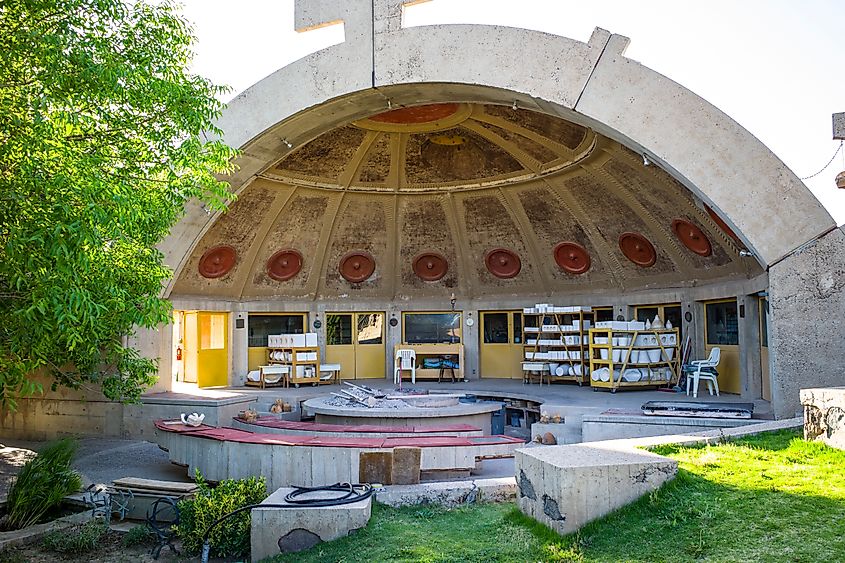
Arcosanti is an experimental town located in central Arizona, a short day trip north of Phoenix. It was founded in 1970 by Italian architect Paolo Soleri as a prototype for “arcology,” a fusion of architecture and ecology aimed at creating dense but sustainable urban environments with minimal environmental impact, a very forward-thinking place for its time.
Built into a vast desert landscape, the town contains a series of concrete and bronze structures, many of which feature open-air amphitheaters, vaulted apses, and solar-aligned design elements. The layout was planned to encourage pedestrian movement and shared spaces over vehicular traffic. A rotating population of about 50 to 150 residents live and work on-site, often participating in educational workshops, urban planning studies, or the production of Soleri-designed wind bells, which help support the project financially.
Though never completed to its original scale (intended to house 5,000), Arcosanti is an incredibly unique ongoing experiment in sustainable urban living. In 2025, you can take guided tours, attend art and architecture events, and stay in its limited selection of guest rooms overnight.
Experience Something New in These Towns This Year
The United States is full of towns with truly unique characteristics. These are places where unusual landmarks and unconventional histories shape everyday life for their residents and memorable experiences for visitors. These offbeat communities offer more than roadside oddities. They reflect the country's highly diverse identity. Whether it’s a town built around giant objects, one built entirely in a Cold War apartment complex, or a community designed to test future models of living, each offers insight into how life in the States can take wildly different forms.



